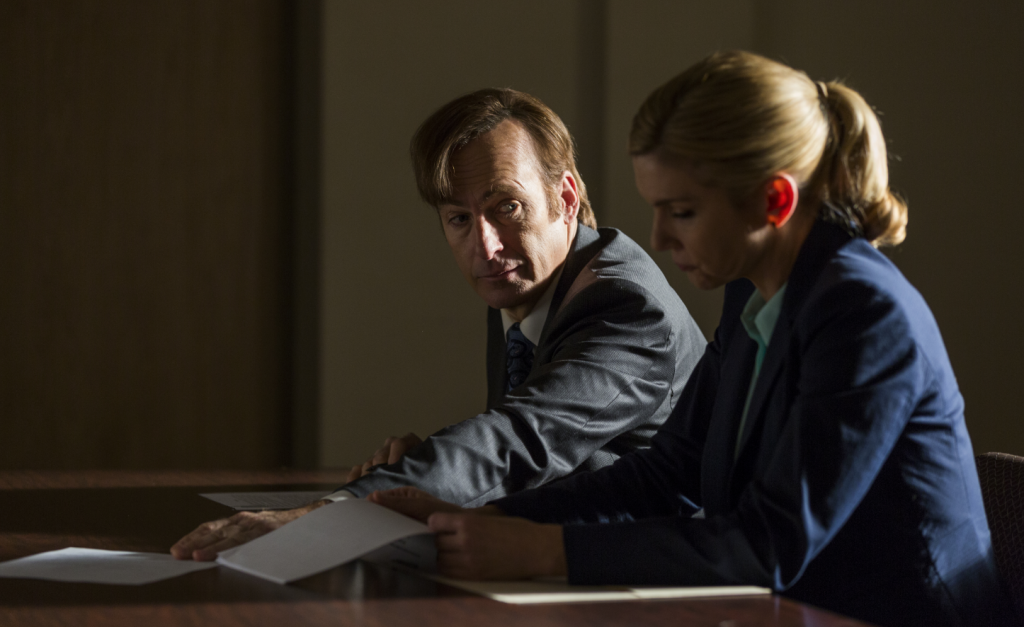As someone with years of experience in the TV industry, I can personally attest that the words “art” and “television” do not usually go together. Yet there are times when lightning is trapped in a bottle. The “Breaking Bad”/“Better Call Saul” epic — and I use that phrase without reservation — deserves more attention than the average show.
A hallmark of good art is that two people can see the same thing but have different “takes” on it, all while agreeing on major themes the artist intended to convey.
Such is the case with my take and that of fellow Angelus writer Joseph Joyce, who reviewed the recent “Better Call Saul” series finale last month.
What Joyce and I both discovered was that “Better Call Saul” was so much more than a sequel, or even a prequel, for that matter. It was a time travel extravaganza ping-ponging between events that took place before, during, and after “Breaking Bad.”
In my first review of “Better Call Saul” in 2015, I wrote: “Because it’s a ‘prequel’ we already know where Saul Goodman winds up. The pull of watching ‘Better Call Saul’ will be discovering the tragic, comic, and thought-provoking way he got there.”
Now that we’re there, I take exception to my colleague’s take on two important themes that are integral to both “Breaking Bad” and “Better Call Saul.” First, Joyce suggests that both shows chronicle how “even a good man can turn evil degree by degree.” Indeed, I thought that was what I was watching in the first several seasons of “Breaking Bad.” I believed the creators were doing a fine job of demonstrating a theological calculus that one cannot do an evil thing in order to bring about a good thing. I thought Walter White was a mild-mannered, downtrodden chemistry teacher whose cancer diagnosis makes him snap.
I was wrong. Instead, the last few seasons of “Breaking Bad” make clear that Walter White was always a monster. He was a man consumed by anger, envy, and a seething sense of superiority. His cancer acted like the activating agent his character might have used in his high school chemistry lab.
Jimmy McGill, who would morph into Saul Goodman, is a character with larceny in his veins. His corrupt state may have evolved, but the base material was always there, just waiting to be fed and watered by the character’s own anger, envy, and sense of superiority.
As similar these two interesting characters are, they each have very different renditions of redemption. Walter White’s redemption requires him to slaughter even more people in a desperate and bloody effort to save his surrogate son, Jesse. Jesse must kill in order to be freed from literal chains of slavery and death. Walter White’s act of selflessness toward Jesse is also dimmed by the fact he has left his biological son, his wife, and infant daughter in a state of material, emotional, and spiritual devastation.
Saul Goodman’s redemption is much less murderous, although the string of bodies he leaves in his wake is substantial and includes the manipulation and eventual death of his own brother, as Joyce points out.
But whereas Saul’s “coming clean” is pure in its intent, to save his wife from a life in prison — I would argue that it is based on a lie. After securing a plea deal that would only require a few years in prison, Saul learns that his wife, Kim Wexler, has put herself in legal jeopardy. To remedy that situation, Saul sabotages his own plea deal insisting he was responsible for everything. The audience knows that is not entirely true, as Kim was a willing participant in many of Saul’s schemes and scams; even some that led to murder.
There is a third redemption, and it is the least tainted of them all. When we first meet Kim, she is a dedicated and ethical lawyer. Through the show’s time-traveling hook, we see Kim’s past has not always been picture perfect. Yet when we first meet her as an adult, she is hard-working and diligent. When she falls in love with Jimmy McGill, her “fall” begins in earnest.
She would be the first person to say she was not an innocent victim. That is why her confession at the end of the series, when she puts in writing and signs her name to it, has so much power. She is not making a deal. She has not had to kill anyone. She has only done what we all must do: tell the truth, even if it is about something awful, and face our penance.
I doubt, as Joyce points out in his review, that Vince Gilligan, the “lapsed Catholic” creator of both “Better Call Saul” and “Breaking Bad,” set out to tell a morality play with Catholic foundations. But in the fall and redemption of Kim Wexler, he comes pretty darn close.

